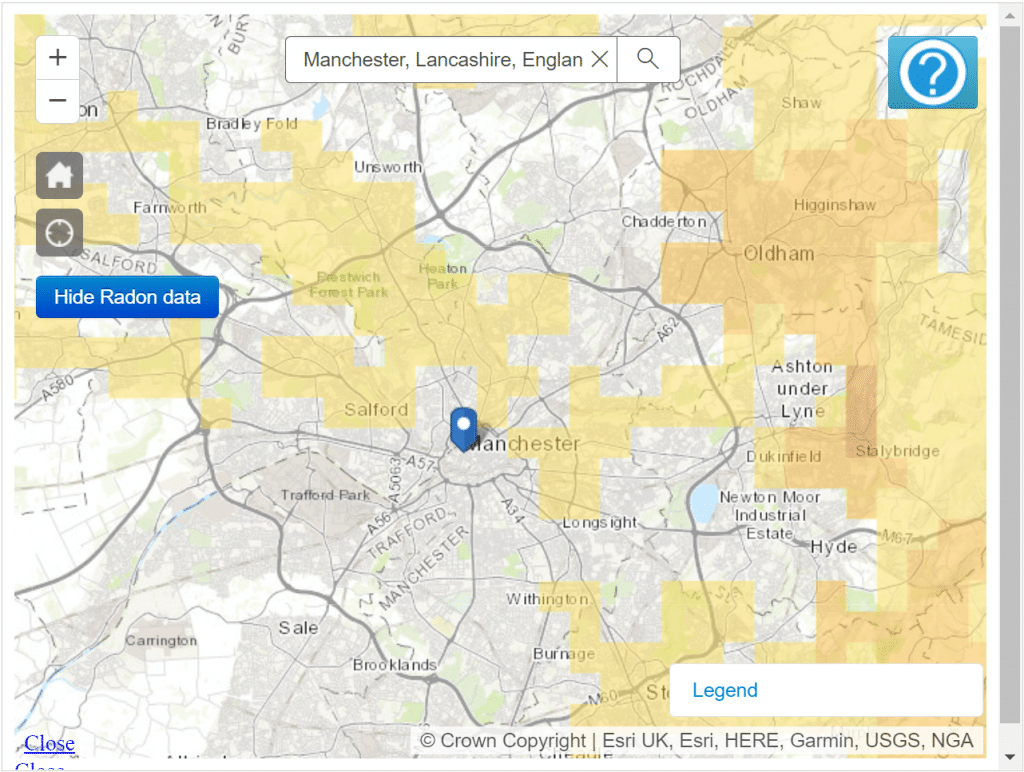Radon is an often-overlooked health hazard that can be present in homes across the UK, and if you are a landlord then you could be responsible not only for the level of radon in the property, but also for any potential health issues that tenants may develop as a result of exposure.
If you are a landlord and have been wondering how you might be responsible for radon within your properties or concerned about how its presence within one of your buildings could be affecting your tenants, then this article will give you all the information you need.
We will run through a landlord’s responsibilities regarding radon, how to test for radon, and what steps you can take to make fulfil your duty of care towards your tenants.
What Is Radon?
Let’s take a moment to talk about what radon is in case this is the first time you have encountered or heard about it.
Radon is a gas that produces no smell, colour or taste, and is undetectable by humans without the use of specialised tools to help measure the radon levels within a property. Radon is formed underground as a result of the decay of the radioactive element uranium which is naturally present within rocks and soils deep beneath the earth’s crust. As it moves out of the ground, it can either disperse in the open air or become trapped within buildings. All buildings contain some radon, but the level can vary considerably.
Radon concentrations vary across the world and indeed the UK, and are largely influenced by the local geology, which affects both the uranium content and porosity of the ground (how freely the gas can move).
Long term exposure to elevated concentrations of radon increases the risk of developing lung cancer. The risk is greatest for smokers and ex-smokers, but radon exposure is also a leading cause of lung cancer in lifelong non-smokers.
So, now you know that radon emerges from the ground and is an invisible health hazard, what do you need to know as a landlord with regards your responsibilities and radon gas?
What Do Landlords Have to Do About Radon?
Radon is one of the many factors covered in the Housing Health & Safety Rating System, and as a landlord, you will have a legal requirement to comply with the risk assessment requirements of this system.

The radon map can help you understand the risk level in your area, however radon levels differ from property to property so remember the only true way to know whether your property is affected is to undertake radon testing.
When you check the radon maps to see if the property you are responsible for sits within a higher risk area within the UK, you will see different areas shaded in different colours. Each 1km grid square is categorised into a risk band, ranging from a less than 1% probability up to a greater than 30% probability of properties containing high levels of radon. The darker the colour, the greater the probability that the property will be affected by radon.
Areas that remain white on the map are lower risk areas, where it has been predicted that less than 1% of homes will contain high levels of radon. This does not necessarily mean that a property here will not be affected, but the risk is lower than in other areas.
All landlords have a duty of care towards their tenants to ensure there are no hazards present in the property they are letting. In line with Housing Health and Rating System (HHSRS), which forms part of the Housing Act 2004, “if the dwelling is in an Affected Area….as radon levels can vary widely between apparently identical dwellings, the only way to determine whether or not there is a threat to health is by measurement.” [*Source: https://assets.publishing.service.gov.uk/government/uploads/system/uploads/attachment_data/file/15810/142631.pdf ]
If the property you let is located in a radon Affected Area, which means anywhere that is not white on the map, you need to conduct a radon test to determine what the radon levels are and whether they present a hazard.
There are different types of radon tests available to you as a landlord.
The most commonly used radon tests are passive radon detectors, which are simple to use and affordable. You will usually place two detectors in the property (one in a living room and one in a bedroom) for a period of time before returning them to a laboratory for analysis.
The standard test period is three months to give the best accuracy, however if a reading is required in a shorter space of time (for example as part of the home buying process) a 10 day test kit is also available which will give a good indication of the radon levels within the property.
These detectors can be sent in the post with instructions to place and return, or for landlords with large portfolios propertECO offers a ‘place and collect’ service to facilitate the testing rollout.
Once the detectors have been analysed in the laboratory, you will receive a results report and test certificate for your records to show that the testing has been completed and whether any further action is required.
Alternatively, you can choose to use an active monitor, which provides a digital readout and does not need to be returned to a laboratory for analysis.
There are a variety of models available with different features, such as WiFi connection for remote monitoring or battery-operated devices for use where there may be no power supply. The monitors must still be left in place for a period of time to give reliable results.
These monitors are more expensive, however can provide you with graphical data showing the actual fluctuations over time and some users prefer being able to check the results on a screen whenever they like.
As there is no laboratory involved in this testing, you will not receive any third-party documentation to show that you have completed the testing so you should choose a digital monitor with the ability to upload the data into the manufacturer’s software so that a report can be created and saved in your files.
What Do The Test Results Mean?
The results from your radon testing will dictate whether any further action is necessary.
In the UK, the Government has set the residential radon ‘action level’ at 200 Bq/m3, which is ten times the level found in the average home. When radon levels exceed this limit in a rented home, the landlord is obliged to carry out remedial work to reduce the concentration. The Environmental Health department of your local authority have powers to enforce this.
Radon remediation can be taken in a number of ways, and the two most common methods used are the installation of a radon sump or a positive pressure system (otherwise known as PIV).
Once action has been undertaken to control the level of radon within a property, you will need to take a further test to demonstrate that the levels have been reduced to an acceptable concentration.
You should re-test once every two year and carry out any necessary maintenance on the radon remediation system, but all in all, the steps taken to understand, measure and control the radon levels within any property far outweigh the cost of failing to provide safe and habitable accommodation for your tenants.
To find out more information you can contact our team online or call us on 0800 046 6193.

